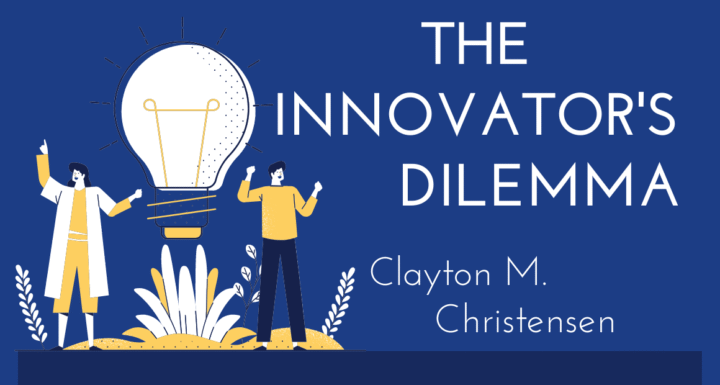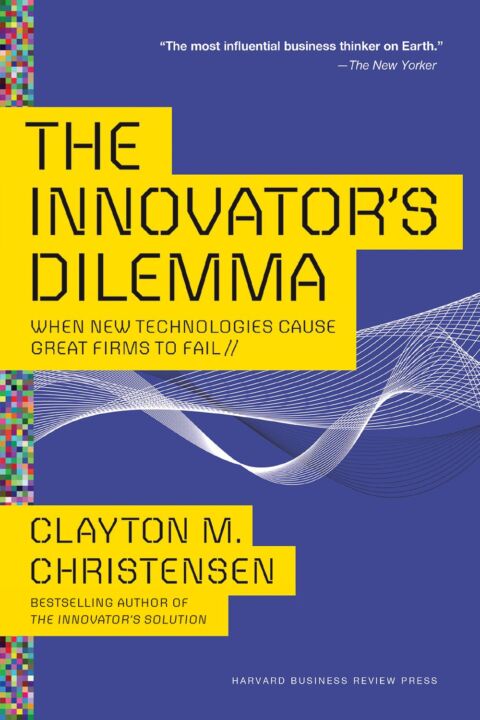Title: The Innovator’s Dilemma
Author: Clayton M. Christensen
Publisher: HarperBusiness
Genre: Business, Entrepreneurship
First Publication: 1997
Language: English
Book Summary: The Innovator’s Dilemma
Harvard professor Clayton M. Christensen says outstanding companies can do everything right and still lose their market leadership — or worse, disappear completely. And he not only proves what he says, he tells others how to avoid a similar fate.
Focusing on “disruptive technology” — the Honda Super Cub, Intel’s 8088 processor, or the hydraulic excavator, for example — Christensen shows why most companies miss “the next great wave.” Whether in electronics or retailing, a successful company with established products will get pushed aside unless managers know when to abandon traditional business practices.
Using the lessons of successes and failures from leading companies, “The Innovator’s Dilemma” presents a set of rules for capitalizing on the phenomenon of disruptive innovation.

Book Review: The Innovator’s Dilemma
The Innovator’s Dilemma is one of those business books that becomes an instant classic. Everyone talks about it until you think you know most of what it has to say without reading it shortly after it comes out. You can barely carry on a conversation about technology without someone using the term “disruptive.” It deserves that reception and as with most cases, there is much more to gain by reading the book than just the popular representation.
The book defined disruptive technologies vs. sustaining technologies and addresses why good, established companies usually dominate and prosper with new sustaining technologies and often fail or are even displaced because of disruptive technologies. It shows how such companies can cope with the challenge to maximize their chances even though there are systemic biases against it given how an established company must approach resource allocation.
“To succeed consistently, good managers need to be skilled not just in choosing, training, and motivating the right people for the right job, but in choosing, building, and preparing the right organization for the job as well.”
Professor Christensen proposes a catchy theory (backed by solid evidence) that innovation in existing companies is not enough when pursued only to get greater sells/better margins. He says that there is a second type of innovation that, if left unnoticed by big companies, can lead them to failure. This second type of innovation also creates market place for smaller companies for which smaller profits are good enough.
The Innovator’s Dilemma is really easy to read, the first half is filled with theory and backing data from disc drive companies, excavator companies, and alike, and even though the data is not up to date, it feels that it doesn’t really matter. I could immediately apply the theory to my company and it fells like I see much more clearly the steps our senior management does.
“Three classes of factors affect what an organization can and cannot do: its resources, its processes, and its values.”
The second half of the book are mostly real stories that not surprisingly confirm the innovation theory. This part doesn’t bring anything new, but gives some time to organize your thoughts about the first part. This book ought to be read by most people interested in business and certainly everyone occupied with computer technology.





